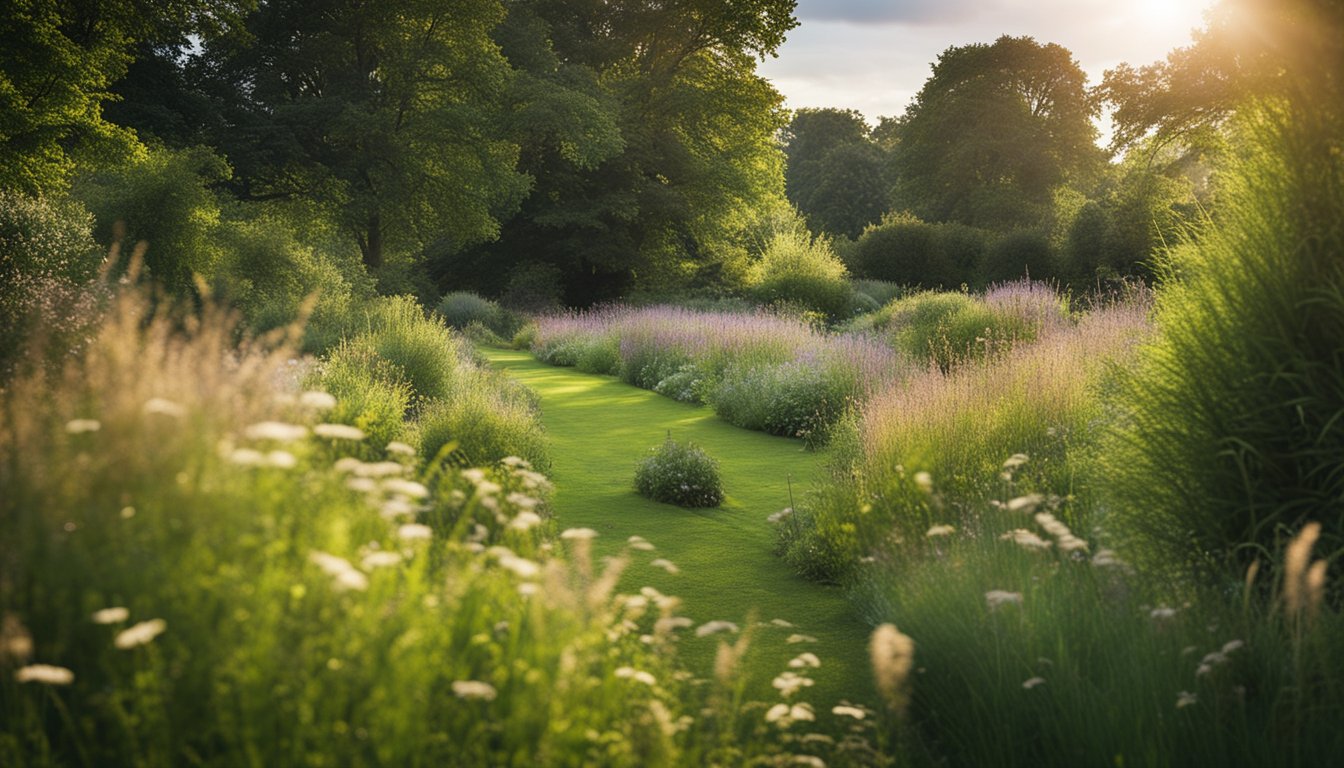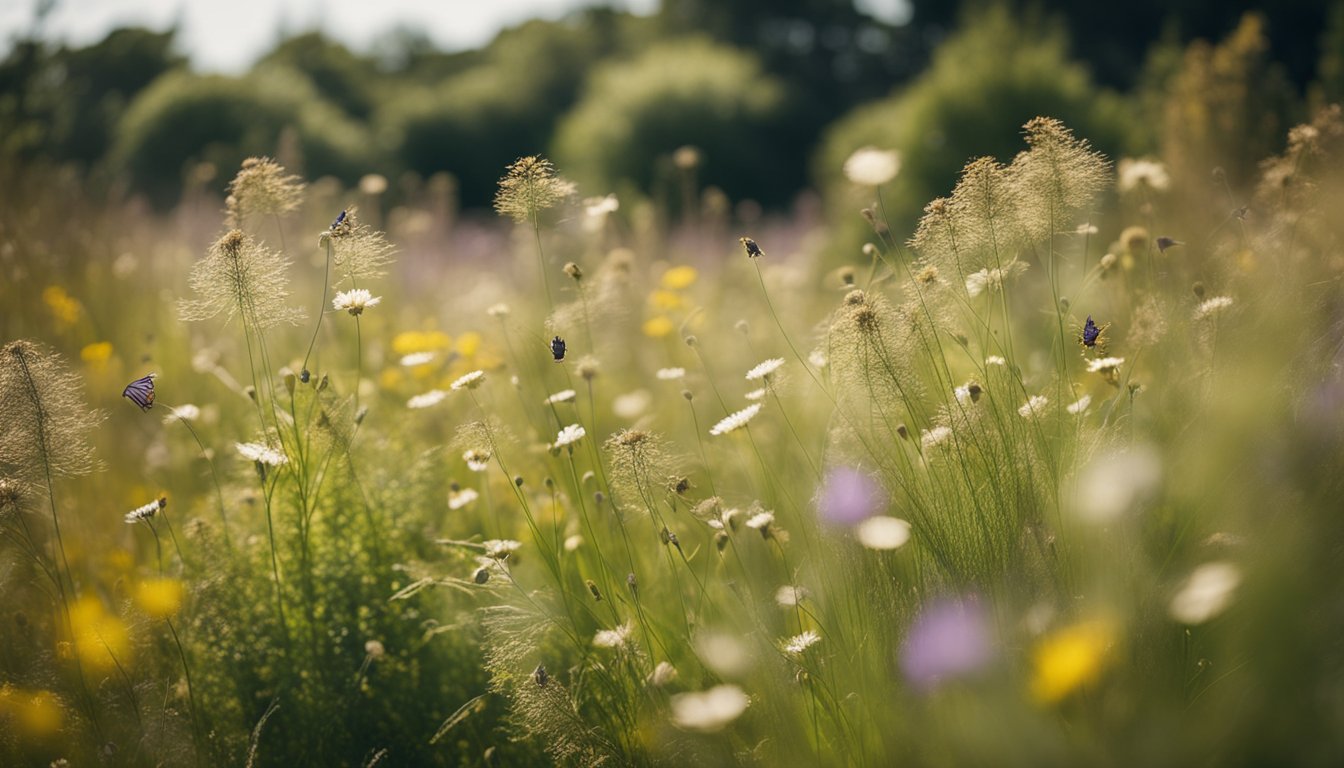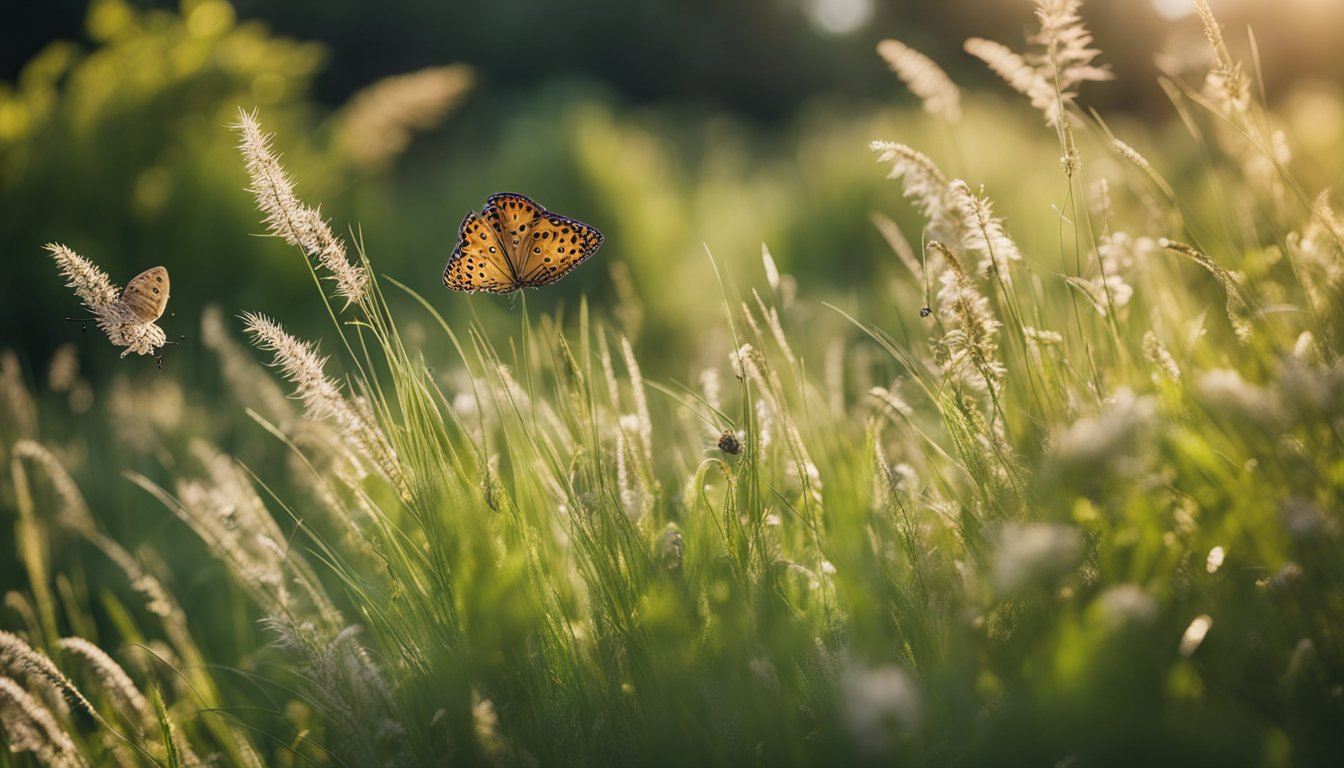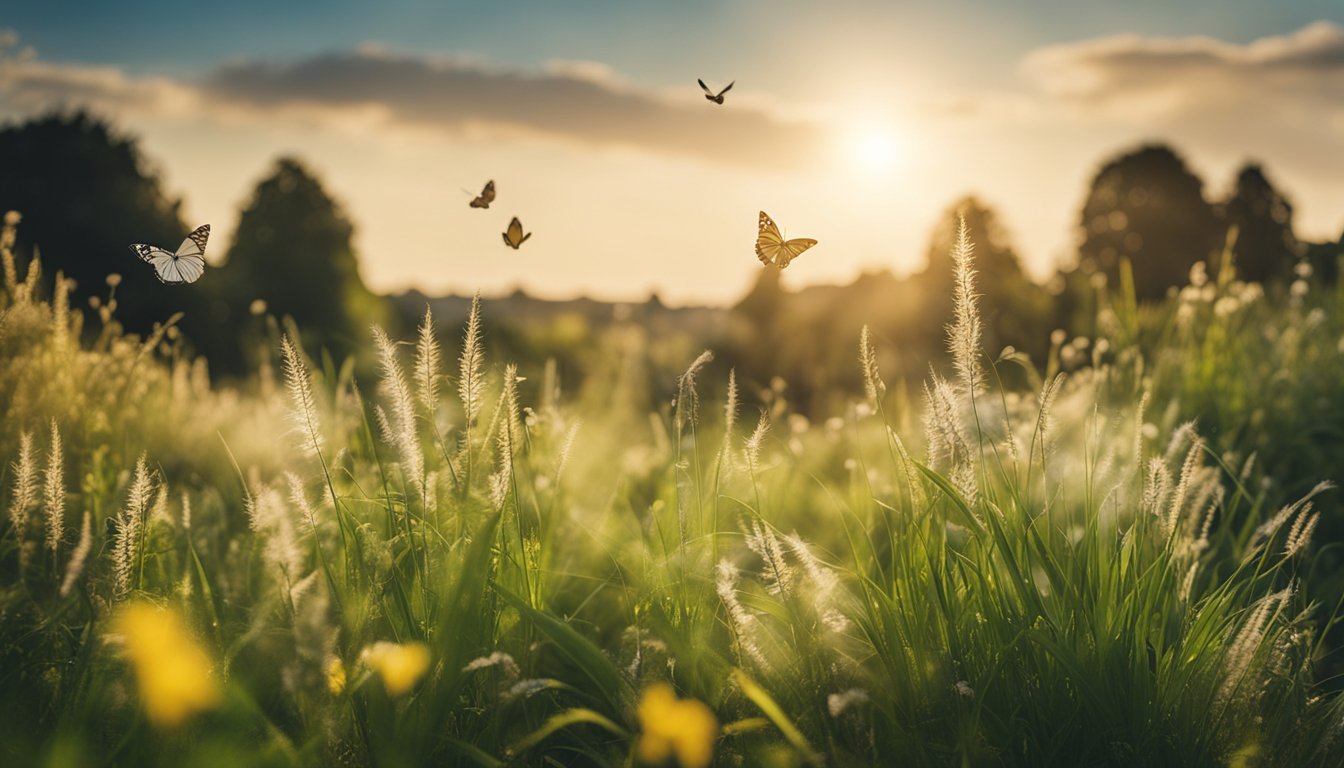Late updated: 06 Nov 2024 15:11
Written by: Emily Thornton
Native UK Grasses for Wildlife-Friendly Gardens: Enhance Biodiversity
In the quest to design a garden that is both alluring and supportive of local wildlife, native UK grasses play an essential role. These grasses, often overlooked in traditional garden planning, provide indispensable benefits such as food and shelter to a myriad of wildlife, including insects and birds. By incorporating native grasses into our gardens, we can support local biodiversity while creating a sustainable and vibrant green space.

Beyond their ecological benefits, these grasses bring unique aesthetic value, offering texture and movement to garden designs. They thrive naturally in the local climate, which makes them low-maintenance and resilient to regional pests and conditions. This means that our gardens can flourish with relatively less effort, which is appealing to both seasoned gardeners and beginners alike.
As we explore the selection of native grasses suitable for wildlife-friendly gardens, it becomes clear that their integration can transform our outdoor spaces into peaceful sanctuaries that enhance biodiversity. Read on to discover how to effectively incorporate these grasses to maximise the ecological benefits and beauty of your garden.
Key Takeaways
- Native grasses boost biodiversity in UK gardens.
- They offer aesthetic value and are low-maintenance.
- Enhancing gardens with them supports local wildlife.
Designing a Wildlife-Friendly Garden

Creating a wildlife-friendly garden involves careful planning to support native species and habitats. By incorporating native plants, crafting diverse habitats, and including native grasses, we enhance biodiversity and support local wildlife.
Selecting Native Plant Species
Choosing native plant species is crucial for fostering a wildlife-friendly garden. Native plants, such as hawthorn and berry-producing shrubs, provide essential food sources for birds and insects. Wildflowers such as sedum, clover, and yellow rattle attract pollinators while adding vibrant colours. When planning, consider the specific needs of local wildlife. For instance, choosing flowering plants that bloom at different times ensures year-round food availability. Using a mix of trees, shrubs, and flowers creates varied layers in the garden, which supports diverse species. It's important for us to select plant species that are adapted to local soil and climate conditions, minimising maintenance needs and ensuring robust growth.
Creating Habitats and Features
Adding specific features and habitats significantly enhances a garden's wildlife appeal. Ponds and bog gardens offer water, attracting amphibians and insects. Logs and dead wood piles provide shelter for hedgehogs and act as breeding grounds for various wildlife. Hedges and bushy borders, crafted from native species, offer nesting sites and protection for birds and small mammals. Compost heaps not only enrich the soil but also serve as habitats for a myriad of creatures. Gardens benefit further from rock gardens that create microclimates suitable for lizards and insects. A meadow with native grasses and wildflowers can mirror natural habitats and draw a wide range of wildlife. These features come together to foster a balanced ecosystem, inviting beneficial visitors such as bats and butterflies.
Establishing Native Grasses
Incorporating native grasses into our garden design is essential for creating a sustainable and wildlife-friendly environment. Native grasses meld seamlessly into wildflower meadows, forming a natural setting full of life. Meadows composed of grasses are less manicured, requiring minimal upkeep and naturally sustaining themselves. The presence of native grasses attracts a variety of insects, which in turn lure birds and bats feeding on them. These grasses blend into other plantings, connecting areas within the garden and offering a habitat for small fauna. Varieties resilient to local conditions mean they thrive with less water or fertiliser. In sum, native grasses are cornerstones in our effort to cultivate a garden that flourishes with native wildlife.
Supporting Biodiversity in Your Garden

By integrating native grasses and other plants, we can create environments that support local wildlife. This section explores two essential aspects: attracting pollinators and birds, and providing natural food sources and nesting materials.
Attracting Pollinators and Birds
Pollinators like bees and butterflies are vital to a thriving garden. Native UK grasses can serve as a groundwork for these creatures. When combined with plants rich in nectar and pollen, such as Honeysuckle or wildflowers, our gardens become a magnet for wildlife.
Birds are naturally attracted to areas providing shelter. A mixed hedge with species like Crataegus monogyna offers excellent shelter and food. This creates a sustainable environment, promoting biodiversity.
Natural Food Sources and Nesting Materials
Creating a haven with diverse food and shelter options is key. Birds and insects need a range of berries, seeds, and other natural foods. By planting native shrubs and trees, we ensure a steady supply of resources.
Providing nesting materials is another critical factor. Grasses and shrubs can be left slightly untidy, allowing birds to gather twigs and leaves. A native hedge not only supplies food but also serves as a structural base for nests. In promoting these practices, we support a more vibrant ecosystem in our gardens.
Frequently Asked Questions

In enhancing a garden for wildlife, selecting appropriate native grasses, understanding care routines, and integrating flowers effectively are essential steps. Each aspect plays a significant role in promoting a healthy ecosystem.
What are the best grass species for creating a biodiversity-rich garden in the UK?
Deschampsia cespitosa, or tufted hair grass, is one of the top choices. It thrives in partial shade and adds texture and height to the garden. Other suitable grasses include Festuca ovina and Bromus erectus, which support various wildlife species by providing food and habitat.
How can you cultivate a wildflower meadow in a British garden?
To establish a wildflower meadow, we suggest choosing a sunny location with well-drained soil. Begin by removing existing grass, then sow a mix of native wildflower seeds in the early spring or autumn. Regular mowing in the first year will help control weeds, and reducing nutrient levels will encourage wildflowers over grasses.
When is the ideal time to trim long grasses to promote wildlife habitation?
The best time to trim long grasses is late winter. This timing ensures that overwintering insects remain undisturbed and that seeds are available for birds during the colder months. Leaving grasses uncut until late February or early March supports a diverse range of wildlife species.
Can ornamental grasses benefit UK wildlife, and if so, which species?
Yes, ornamental grasses can provide aesthetic appeal and ecological benefits. Species like Calamagrostis 'Karl Foerster' and Stipa gigantea offer shelter and food sources for insects and birds. These grasses can be beautiful additions to a wildlife-friendly garden while also supporting local biodiversity.
What considerations should be taken into account when identifying wild grasses in the UK?
Identifying wild grasses involves examining leaf shape, flower heads, and growth habits. It is important to note the colour, size, and texture of the grass as well. Using a field guide or app for identification can be helpful, ensuring our garden remains a supportive environment for native species.
What low-growing floral plants can be introduced into a wild lawn to enhance biodiversity?
Adding plants like clover, self-heal, and birdsfoot trefoil can enhance a wild lawn. These low-growing species not only add visual interest but also provide nectar and pollen for pollinators. They contribute to creating a diverse habitat that supports the garden's overall ecological health.
